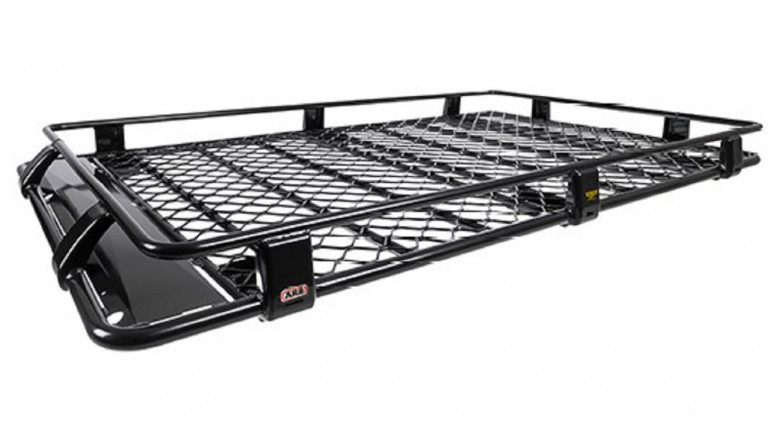views
Introduction
Carrying large or bulky items on your roof rack can be a great solution for freeing up space inside your vehicle. However, ensuring that the load is carried safely and securely is essential to prevent accidents or damage to both your vehicle and the items being transported. This guide will walk you through the best practices for loading, securing, and driving with a load on your roof rack to guarantee safety and efficiency during your travels.
1. Choose the Right Roof Rack for Your Vehicle
The first step in safely carrying a load on your roof rack is ensuring that your vehicle is equipped with the appropriate roof rack system. Different vehicles and loads require specific types of racks. When choosing a roof rack, consider the load-bearing capacity of both the rack and your vehicle’s roof. Be sure the roof rack is designed to handle the items you plan to transport, whether it’s bikes, kayaks, luggage, or other equipment.
2. Distribute the Load Evenly
Proper weight distribution is crucial when loading your roof rack. When you load items, try to position the heaviest ones in the center and distribute lighter items toward the edges. Uneven weight distribution can lead to instability, making your vehicle harder to control, especially when turning or braking. A balanced load will help prevent swaying and ensure that your vehicle handles properly while driving.
3. Secure the Load with Quality Straps
One of the most important safety steps is properly securing your load. Use high-quality tie-down straps, ropes, or bungee cords to firmly secure your items. It’s important that the straps are tight enough to prevent any movement but not too tight that they could cause damage to the items or the roof rack. Be sure to check the straps regularly, especially on longer trips, to make sure they remain secure.
4. Minimize Wind Resistance
Wind resistance can significantly affect both the performance of your vehicle and fuel efficiency. Items carried on your roof rack create drag, which can reduce your vehicle’s aerodynamics and increase fuel consumption. To minimize wind resistance, opt for an aerodynamic roof rack design or load your items as low as possible. Additionally, if your load is particularly bulky, consider using a roof box to keep it streamlined and reduce drag.
5. Be Mindful of Your Vehicle’s Height
When loading your roof rack, always account for the added height of your vehicle. Bulky loads or tall items such as kayaks or ladders can increase your vehicle’s clearance significantly. This is especially important when passing under bridges, entering parking garages, or navigating narrow streets. Always double-check the height of your vehicle with the load in place to avoid potential accidents.
6. Drive Carefully with a Loaded Roof Rack
Driving with a loaded roof rack requires a few adjustments to your driving habits. Because the load adds weight to your vehicle’s top, it can affect your handling and braking. Avoid high speeds, especially on highways or during windy conditions. Additionally, take wide turns and maintain a safe distance from other vehicles to ensure your vehicle remains stable and to avoid sudden shifts in your load.
7. Inspect the Load Periodically
It’s always a good idea to check the condition of your load periodically during long trips. Stop at regular intervals to ensure that the straps are still tight and the load hasn’t shifted. This is especially important after driving on rough roads, as bumps can loosen the straps or shift the load.
8. Use a Cargo Net for Smaller Items
If your roof rack is carrying smaller items, such as luggage or camping gear, consider using a cargo net to secure everything in place. Cargo nets are particularly helpful for preventing items from shifting and can keep your roof load organized, making sure that everything stays in place throughout your journey.
Conclusion: Prioritize Safety and Efficiency
Carrying a load on your roof rack can be a convenient way to maximize space in your vehicle, but it’s essential to prioritize safety at every step of the process. Choosing the right rack, distributing weight properly, securing the load tightly, and driving carefully are all vital components of transporting items safely. With the right preparation, you can avoid damage to your vehicle and ensure a smoother, more efficient journey.
FAQs
-
What is the maximum weight my roof rack can carry?
-
The weight limit for your roof rack depends on the model and your vehicle's specifications. Always refer to the manufacturer’s guidelines for load capacity.
-
Can wind resistance affect my vehicle’s fuel efficiency?
-
Yes, carrying bulky items on your roof can cause drag, which leads to higher fuel consumption. Using an aerodynamic design can help reduce drag.
-
How often should I check the load on my roof rack?
-
It’s a good practice to check the load every couple of hours, especially on long trips, to ensure that it remains secure.
-
What kind of roof rack should I use for carrying bikes or kayaks?
-
Specialized roof racks are available for transporting bikes, kayaks, or skis. These racks are designed to securely hold these items without causing damage.
-
Do I need a special roof rack for my car model?
-
Yes, different cars require specific roof rack systems. Make sure you select a roof rack that’s compatible with your vehicle’s make and model.














Comments
0 comment